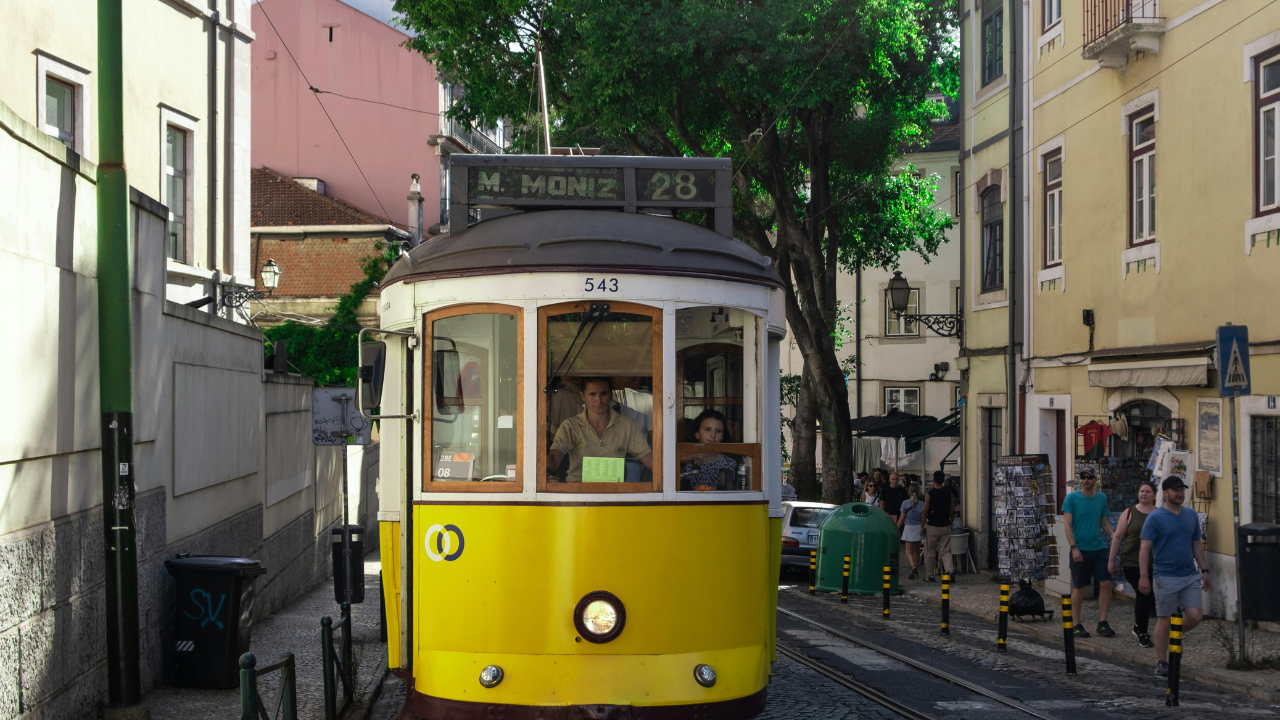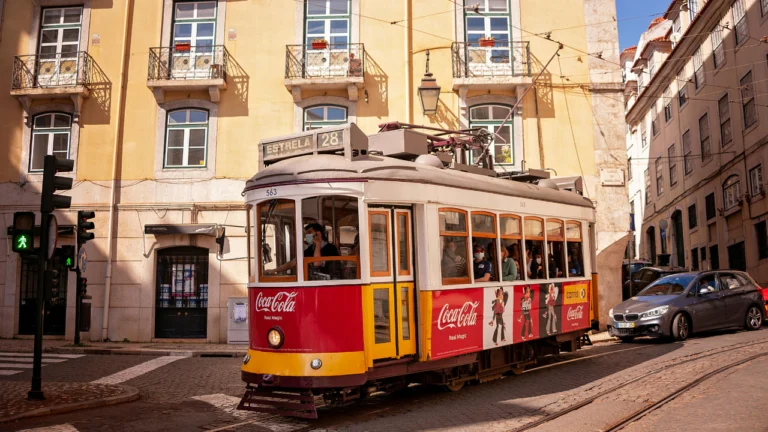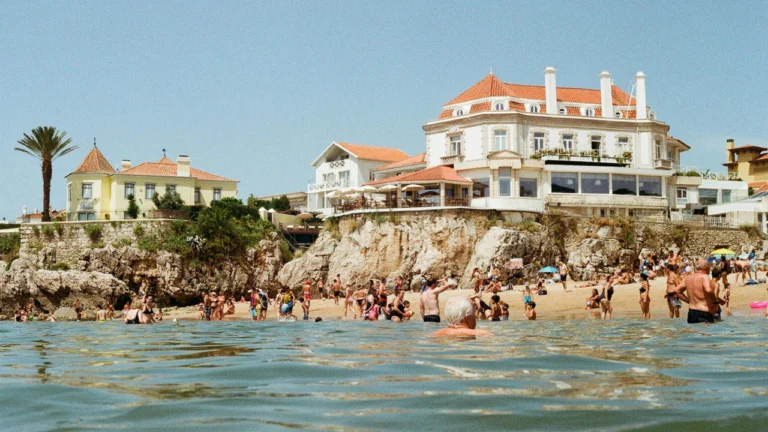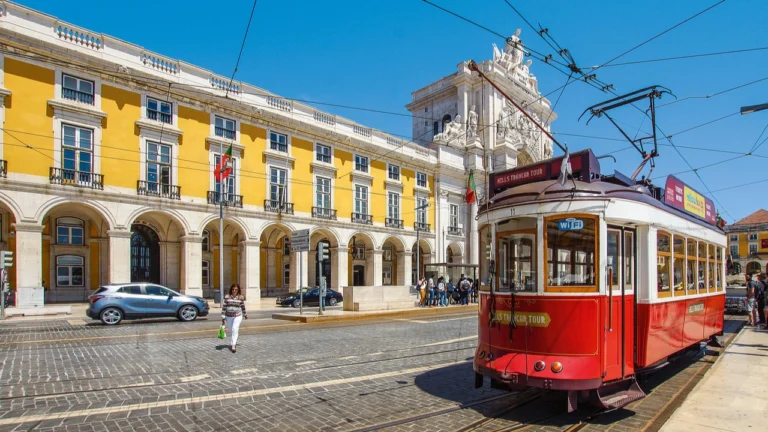Tram 28 Lisbon A Local’s Guide to Urban Adventure
Last updated on August 21, 2025 at 14:54:43
The ancient yellow tram groaned to life at 6:30 AM, its wooden seats still cold from the Lisbon morning mist. My daughter Lena pressed her nose against the window, watching Alfama’s sleeping streets slowly wake beneath us. As Tram 28 lurched around another impossible corner, sending us sliding across the polished benches, she burst into delighted laughter. In that moment, gripping the brass rails while the city tumbled past in a blur of terracotta and azulejo tiles, I realized something profound: this rattling piece of history delivers the same rush as any mountain expedition I’ve ever taken.
After splitting my life between Brighton and Lisbon for the past three years, I’ve discovered that Tram 28 offers far more than Instagram opportunities. This legendary route through Lisbon’s seven hills has become my family’s prescription for everything from creative blocks to rainy-day blues. The science behind why it works might surprise you as much as it surprised me.
The Stress-Melting Magic of Surrendering to Tram Time
Modern life moves at broadband speed, but Tram 28 operates on what locals call “hora portuguesa” – Portuguese time. The moment you step aboard at Martim Moniz, your smartphone becomes wonderfully useless. You cannot scroll while gripping handrails through those stomach-dropping descents near São Jorge Castle. You cannot answer emails while helping an elderly senhora with her shopping bags near Estrela. The tram forces you into radical presence, and research from environmental psychology confirms what every regular passenger knows: this enforced mindfulness dramatically reduces cortisol levels.
Consider this your moving meditation chamber. The rhythmic clatter of wheels on tracks, the hydraulic hiss of vintage brakes, the conductor’s melodic call of “Próxima parada!” – these sounds create what neuroscientists call “cognitive restoration.” Unlike the London Underground’s aggressive efficiency, Tram 28 teaches patience through experience. When it stops unexpectedly because someone’s car blocks the narrow Graça streets, everyone simply waits. Nobody fumes. This collective acceptance becomes contagious, and by journey’s end, your shoulders have dropped inches without you noticing.
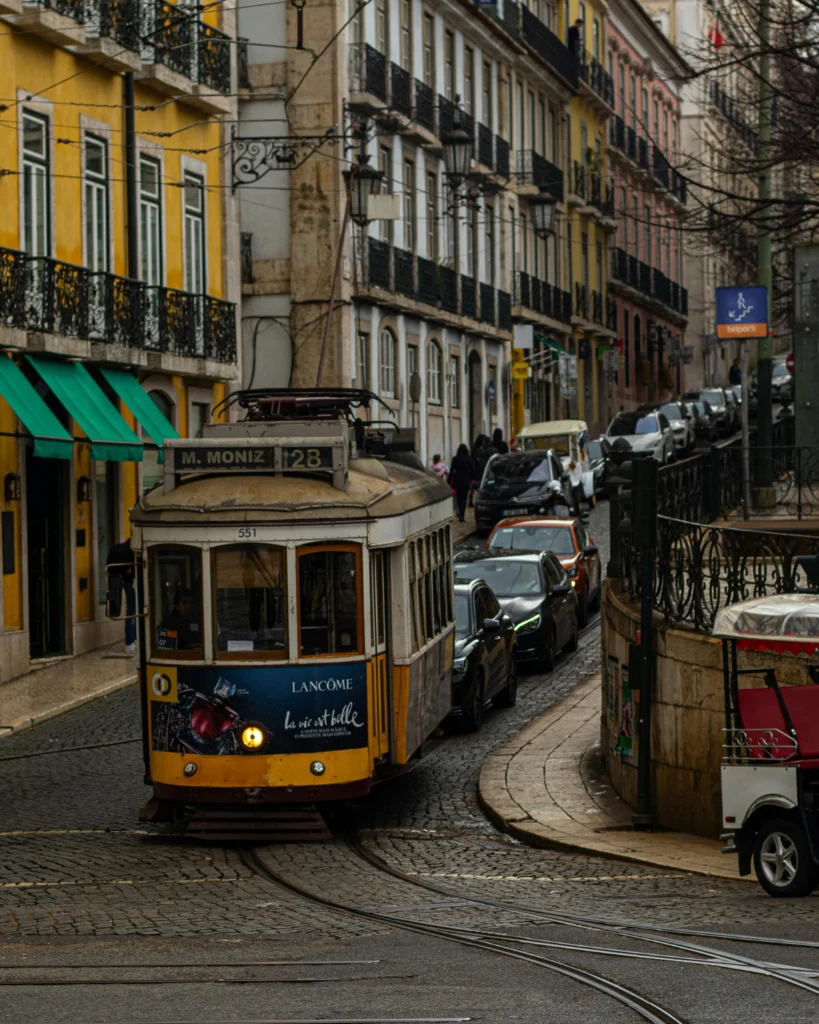
Urban Nature’s Hidden Workout Along the Route
University of Essex researchers proved that exercise feels significantly easier when surrounded by greenery, and Tram 28 secretly delivers this benefit throughout its winding journey. Between Estrela’s botanical gardens and Príncipe Real’s century-old trees, you’re constantly exposed to what Portuguese call “verde urbano” – urban green that tricks your brain into enjoying physical activity.
Here’s what my fitness tracker revealed after a full day exploring Tram 28’s route: 16,847 steps, 42 floors climbed, and calories equivalent to a serious gym session. Yet it never felt like exercise because each stop offers irresistible exploration. The walk from Campo de Ourique to the cemetery (trust me, it’s gorgeous) takes you up slopes that would challenge any StairMaster, but you’re too distracted by the smell of fresh bread from corner bakeries and the sight of locals tending their window gardens to notice your racing heartbeat.
My five-year-old son Theo now insists on walking between certain stops because he’s discovered secret shortcuts – narrow stone steps between buildings that only locals know. These impromptu hill climbs, fueled by curiosity rather than obligation, have replaced our need for structured exercise entirely.
The Accomplishment of Mastering Lisbon Like a Local
Conquering Tram 28 provides the same satisfaction as summiting Ben Nevis, just with better coffee at the top. The challenge begins with boarding strategy. Veterans know that positioning yourself at the third pole from the front at Martim Moniz guarantees a seat within two stops. Mastering the standing surf – remaining upright through the Portas do Sol hairpin without grabbing anyone’s grandmother – takes weeks of practice.
Then comes navigation confidence. Knowing when to abandon ship at Graça during tourist rush hour, walking the backstreets to rejoin at Senhora do Monte. Understanding that early morning rides belong to locals heading to work, while sunset journeys offer golden light through dusty windows. Each small victory – successfully directing lost tourists in Portuguese, helping someone with heavy bags, knowing exactly when to brace for that violent turn near the Sé Cathedral – builds into genuine urban accomplishment.
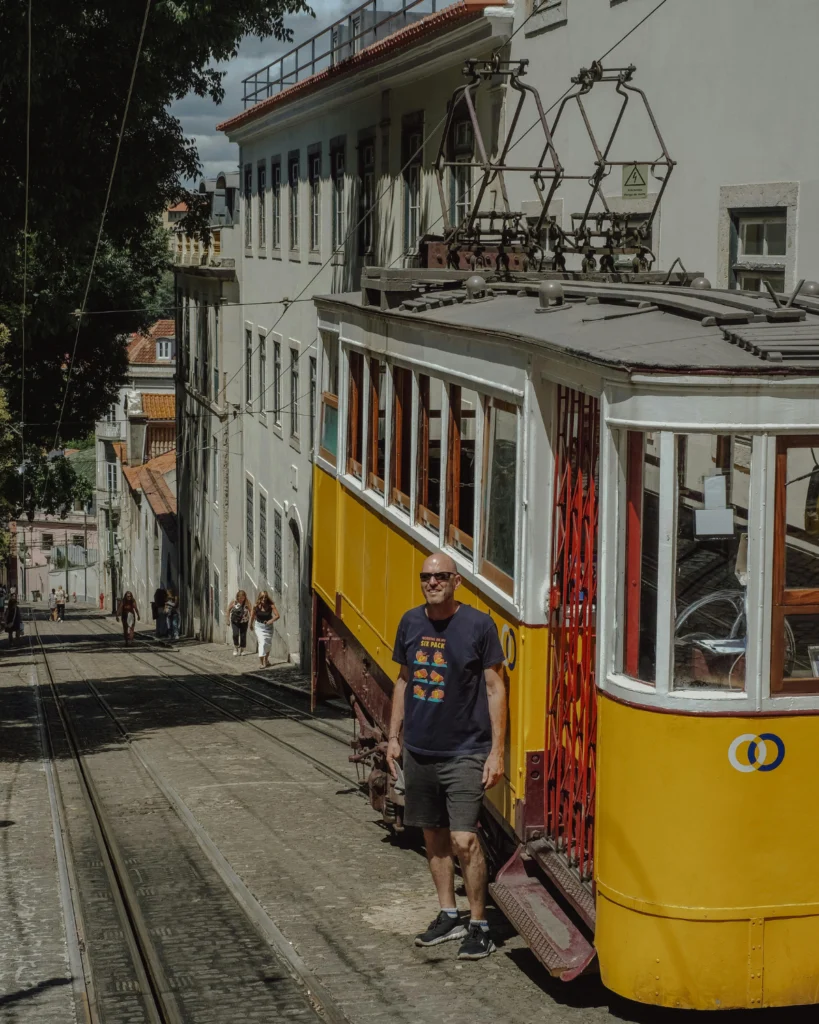
Forging Unexpected Connections in Motion
Tram 28 creates friendships that airport lounges and hotel bars never could. When everyone’s pressed together like sardines in olive oil, gripping the same poles through another death-defying descent, British reserve evaporates faster than morning fog over the Tejo. Last month, I met Maria, a tile restoration artist who explained why the azulejos near Santa Luzia tell stories of Lisbon’s maritime glory. She now teaches my daughter traditional Portuguese patterns every Sunday.
The shared adventure of simply staying upright bonds strangers instantly. When someone’s pastéis de nata box goes flying around a corner, everyone scrambles to help, laughing at the absurdity. These micro-moments of collective experience create genuine connections that outlast any networking event.
Your Tram 28 Adventure Prescription
Ready to transform your Lisbon visit from tourist checklist to therapeutic adventure? Start before 7 AM at Martim Moniz with strong coffee and zero agenda. Choose three random stops you cannot pronounce. Walk between stations when crowds surge. Stop wherever locals gather. By sunset, you’ll understand why this clanging yellow time machine remains the city’s most honest therapist.
The beauty of Tram 28 lies not in its famous views but in its ability to slow time, strengthen legs, calm minds, and connect souls. In our age of optimization and efficiency, sometimes the best adventure comes from surrendering to an ancient tram’s wisdom: that the journey itself, rattling and imperfect, is precisely the point.
Currently writing from a miradouro in Graça, where Tram 28 just passed, fifteen minutes late and absolutely perfect. – Jorah
FAQs About Tram 28
How much does Tram 28 cost?
A single Tram 28 ticket costs €3 when purchased onboard. However, a 24-hour public transport pass (€6.45) offers better value, allowing unlimited hopping on and off to explore neighborhoods properly.
Is Tram 28 safe for families with young children?
Yes, but hold children firmly during sharp turns and steep descents. Morning rides are calming for families. My five-year-old loves it, though we always position ourselves near poles for grip during the wilder corners near São Jorge Castle.

